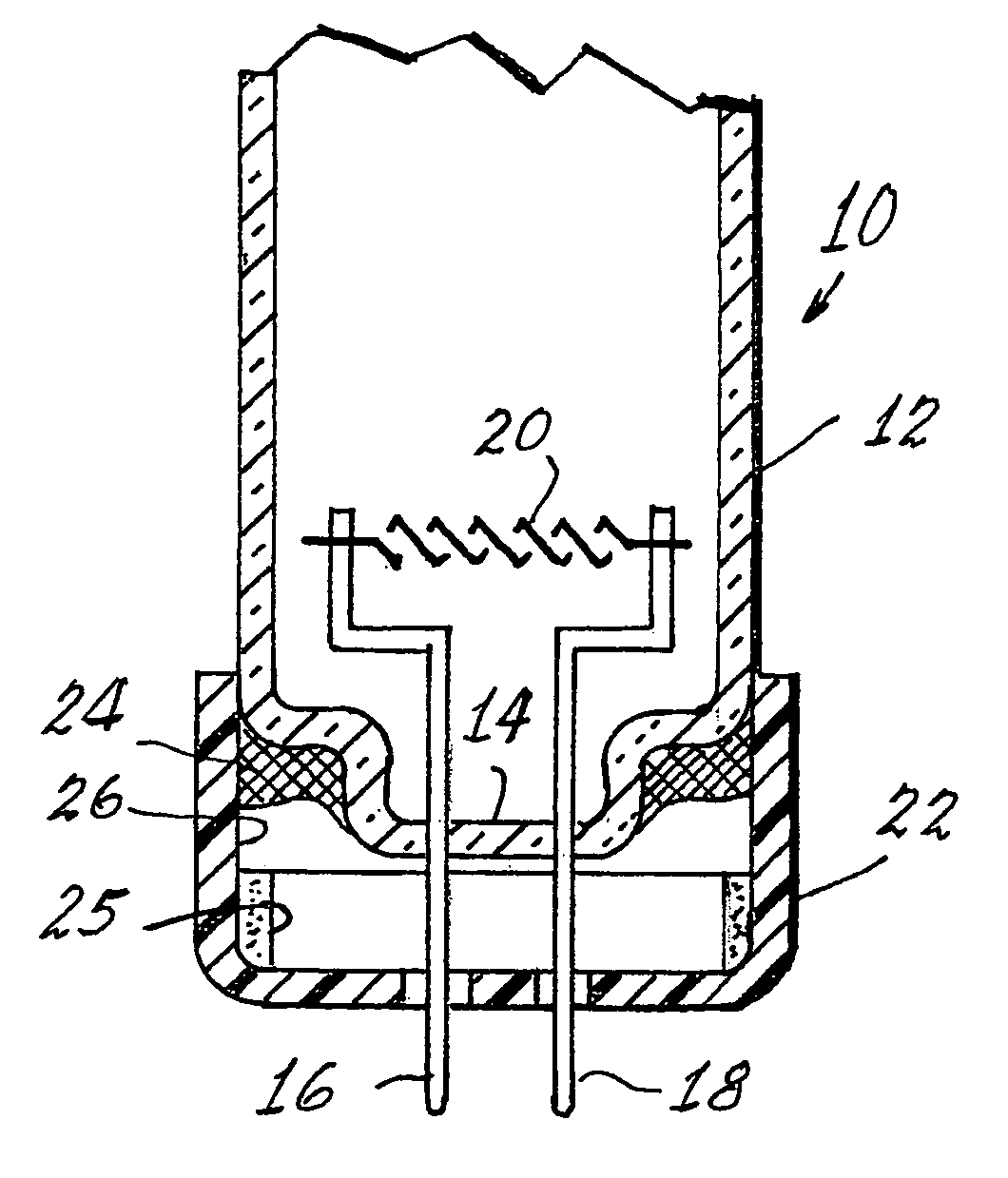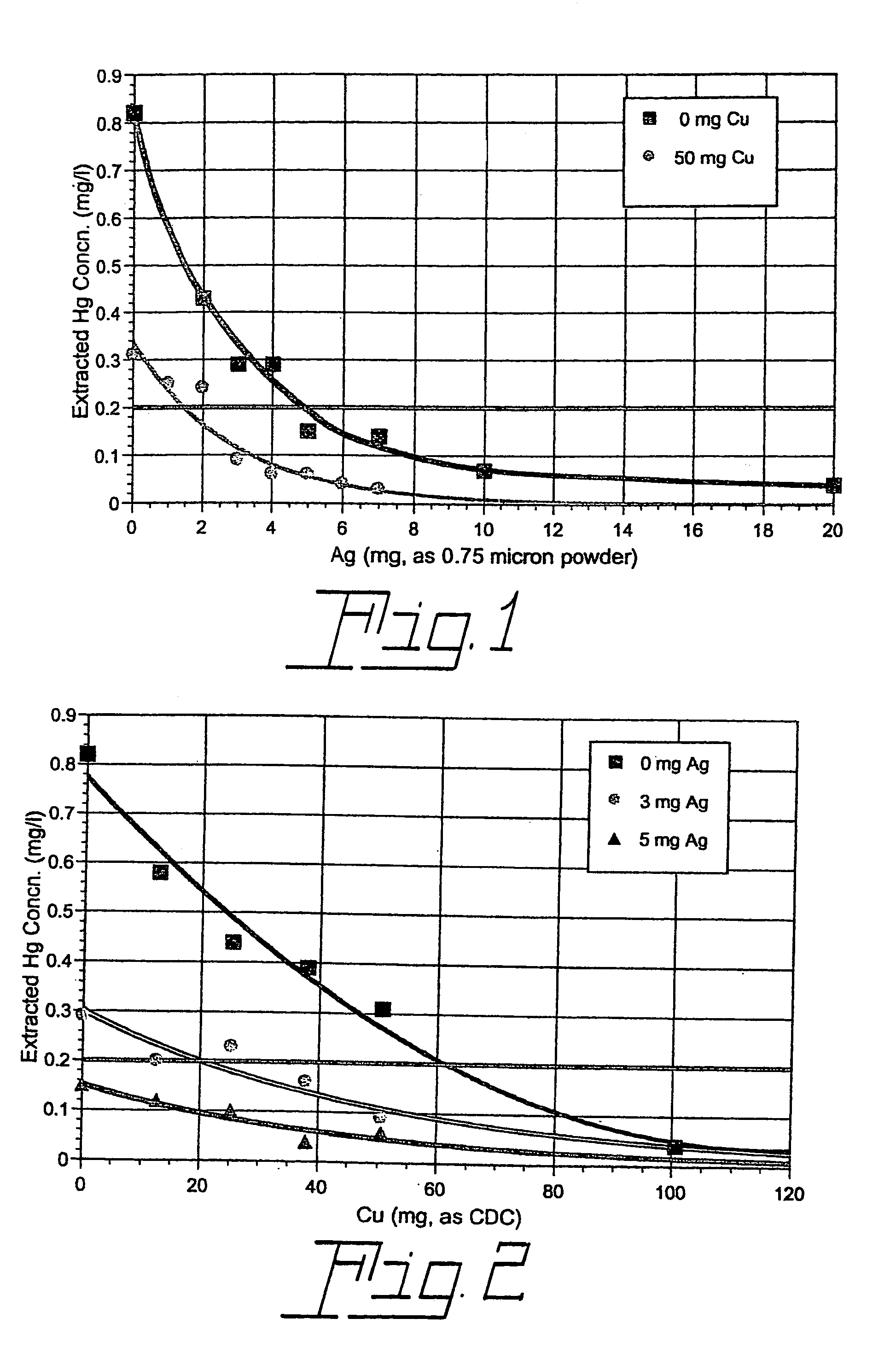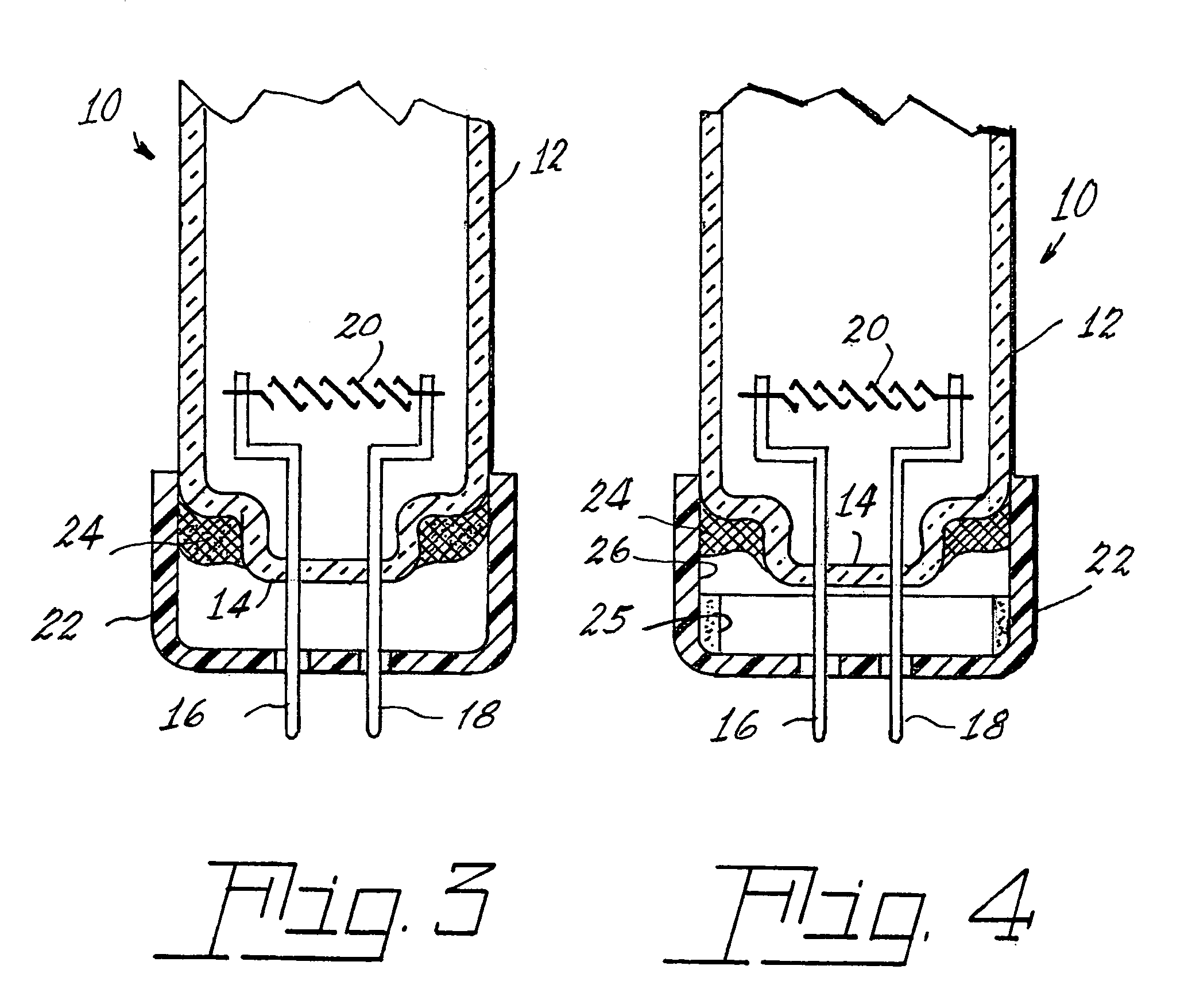Method of controlling leachable mercury in lamps
a technology of mercury and fluorescent lamps, which is applied in the field of mercury vapor discharge lamps, can solve the problems of inconvenient or impossible confinement of the chemical agent required to chemically combine nearly all of the mercury within the fluorescent lamps, and the amount of mercury in the fluorescent lamps is too large to be effective, inexpensive and easy to apply
- Summary
- Abstract
- Description
- Claims
- Application Information
AI Technical Summary
Benefits of technology
Problems solved by technology
Method used
Image
Examples
example 1
[0023]A series of four TCLP tests were carried out with commercial 32WT8 fluorescent lamps manufactured without metallic mercury but with 6 mg of ionic mercury (as HgO) soluble in the TCLP extraction fluid. No additives were used in one of the tests. However, each of the other three tests included 50 mg of copper as the compound copper dihydroxide carbonate (CDC), 4 mg (4×10−5 mole) of finely divided metallic silver (with most particles in the 0.5–1.0 micron range), or a combination of the two. The TCLP test results (leached mercury concentration in units of mg per liter of extraction fluid) are listed in Table I below for T8 lamps with 6 mg soluble Hg2+.
[0024]TCLP Results for T8 Lamps without Metallic Hg, with 6 mg Soluble Hg2+, and with a Soluble Copper-Containing Compound (CDC), Finely Divided (0.5–1.0 Micron) Metallic Silver, a Combination of CDC and Finely Divided Metallic Silver, or No Additive Added at the Start of the Test
[0025]
TABLE ICu (as CDC) (mg)Ag (0.5–1.0 micron) (mg)...
example 2
[0027]Additional TCLP tests were carried out in the same way as those described in Ex. 1 except that 4 mg of silver as silver oxide, Ag2O, was used rather than metallic silver. As before, tests were performed both with and without the presence of 50 mg of copper as CDC. The results of these tests, along with those performed without the addition of silver oxide, are compared in Table 2 below.
[0028]TCLP Results for T8 Lamps without metallic mercury, with 6 mg Soluble Hg2+ and with a Soluble Copper-Containing Compound (CDC), Silver Oxide (Ag2O), a Combination of CDC and Silver Oxide, or No Additive Added at the Start of the Test.
[0029]
TABLE IICu (as CDC) (mg)Ag (as Ag2O) (mg)Leached Hg (mg / L)000.825000.31040.245040.07
[0030]It is seen that a relatively small amount of a soluble nonmetallic copper-containing compound used in combination with a small quantity of silver oxide in the Toxicity Characteristic Leaching Procedure applied to a mercury vapor discharge lamp may be much more effect...
example 3
[0031]Additional TCLP tests were carried out in the same way as those described in Ex. 2 except that 4 mg of silver as silver carbonate, Ag2CO3, was used rather than silver oxide. As before, tests were performed both with and without the presence of 50 mg of copper as CDC. The results of these tests, along with those performed without the addition of silver carbonate, are compared in Table 3 below.
[0032]TCLP Results for T8 Lamps without Metallic Hg, with 6 mg Soluble Hg2+ and with a Soluble Copper-Containing Compound (CDC), Silver Carbonate (Ag2CO3), a Combination of CDC and Silver Carbonate, or No Additive Added at the Start of the Test.
[0033]
TABLE IIICu (as CDC) (mg)Ag (as Ag2CO3) (mg)Leached Hg (mg / L)000.825000.31040.245040.12
[0034]As in the preceding example, it is seen that a relatively small amount of a soluble nonmetallic copper-containing compound used in combination with a small quantity of a silver compound in the Toxicity Characteristic Leaching Procedure applied to a mer...
PUM
 Login to View More
Login to View More Abstract
Description
Claims
Application Information
 Login to View More
Login to View More - R&D
- Intellectual Property
- Life Sciences
- Materials
- Tech Scout
- Unparalleled Data Quality
- Higher Quality Content
- 60% Fewer Hallucinations
Browse by: Latest US Patents, China's latest patents, Technical Efficacy Thesaurus, Application Domain, Technology Topic, Popular Technical Reports.
© 2025 PatSnap. All rights reserved.Legal|Privacy policy|Modern Slavery Act Transparency Statement|Sitemap|About US| Contact US: help@patsnap.com



